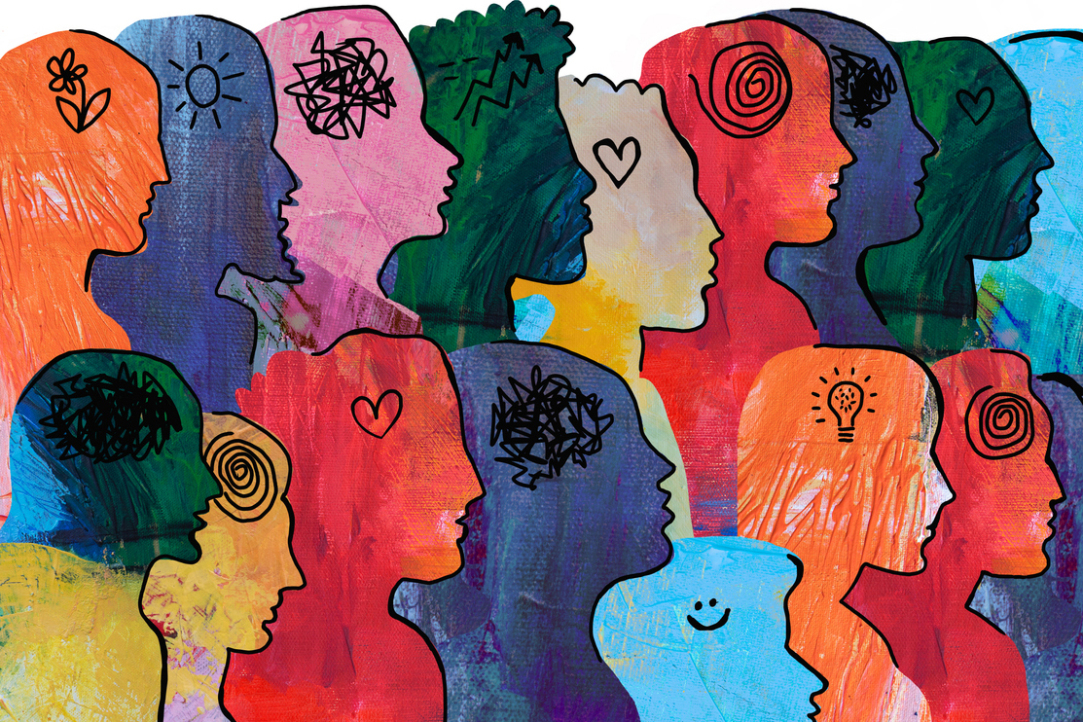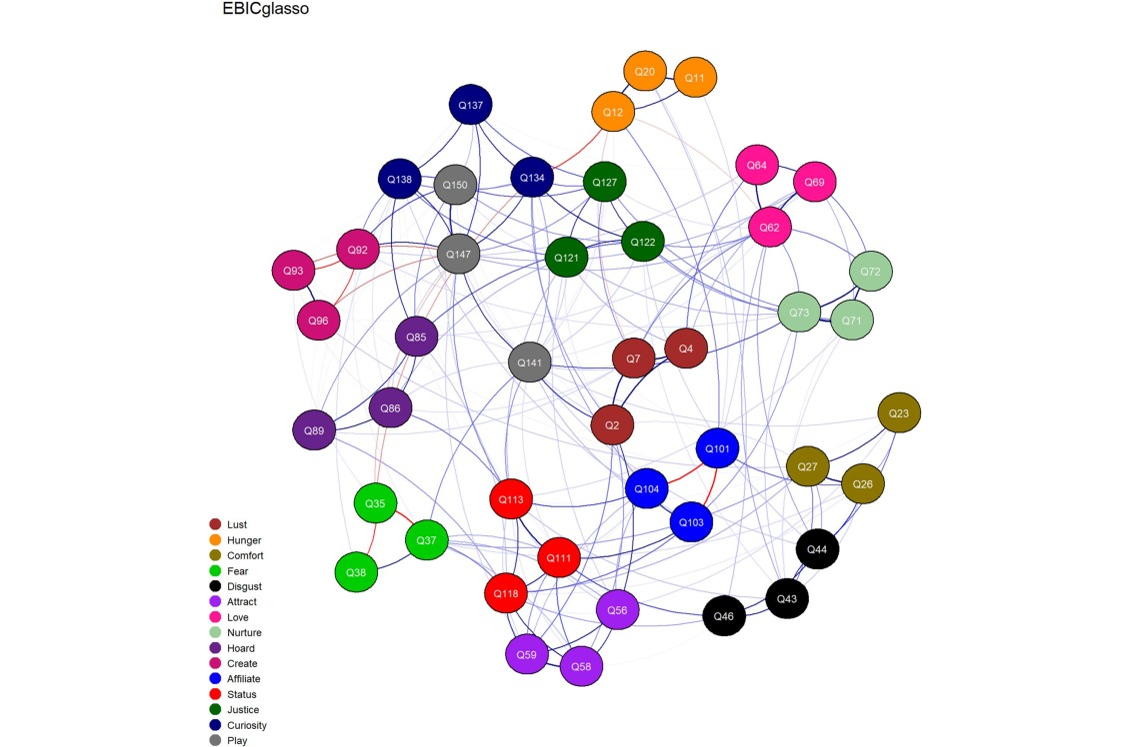Scientists Identify Fifteen Key Motives Driving Human Behaviour

Researchers at HSE University and the London School of Hygiene and Tropical Medicine have identified 15 key motives that drive human behaviour. By analysing people's views, preferences, and actions through an evolutionary lens, they demonstrated how these motives intertwine to shape habits and interpersonal relationships. The findings have been published in Personality and Individual Differences.
The question of what motivates human behaviour has long intrigued psychologists. Various approaches are used to assess these underlying motives. The most well-known theory is Abraham Maslow's hierarchy of needs, introduced in the mid-20th century. However, most approaches emphasise the social aspects of motivation while overlooking its evolutionary underpinnings.
A group of researchers at HSE University and the London School of Hygiene and Tropical Medicine proposed analysing human behaviour motives from an evolutionary perspective. In the proposed framework, all motives are viewed as evolutionary adaptations that enhanced early humans' ability to survive in their environment and continue to influence behaviour today. The scientists proceed from the premise that if certain evolutionary mechanisms once triggered specific behaviours, the underlying motives can be identified using standard psychometric techniques.
To accomplish this, the study authors conducted an online survey with over 500 participants who were asked to rate 150 statements concerning their everyday preferences, fears, desires, and social aspirations. The statements were based on previously identified motives from other studies reflecting physical, reproductive, or social needs, such as 'I enjoy going on roller coasters,' 'Eating is less important to me than it seems to be for most people,' and 'I spend a lot of time staying in touch with my friends,' among others.
Using network analysis, the researchers identified stable clusters of motives. The study found that human behaviour is driven by 15 key motives, which can be grouped into five broad categories: environmental (Hoard, Create), physiological (Fear, Disgust, Hunger, Comfort), reproductive (Lust, Attract, Love, Nurture), psychological (Curiosity, Play), and social (Affiliate, Status, Justice).

The researchers also identified functional relationships between motives, contributing to a deeper understanding of motivational structures. For example, Justice has strong ties to Nurture and Curiosity, suggesting that it is a function of both concern for the welfare of others and a need to keep abreast of where anti-social behaviours might be occurring.
Interestingly, the motives of Play and Status emerged as pivotal points of connectivity, interacting extensively with other nodes, suggesting they influence a broad range of related motives. Status appears to be important as it facilitates the attainment of other goals by providing access to resources that enhance the chances of success in life, including attracting a partner. Maintaining status involves hoarding resources, fearing the loss of these resources, and effectively using them in various situations. The motive of play, in turn, helps develop the skills needed to maintain status and adapt to changing circumstances.
'Using network-based psychometric techniques, we were able to observe how motives interrelate. For instance, the motives of Love and Nurture are positioned close to each other in the network, which makes sense from an evolutionary perspective, as caring for offspring enhances their chances of survival. Conversely, the motives of Fear and Curiosity often have opposing effects. Fear keeps us away from danger, but when excessive, it can suppress curiosity, which fosters knowledge and innovation,' explains Albina Gallyamova, Junior Research Fellow at the HSE Centre for Sociocultural Research.
The study also revealed age- and gender-related variations in the significance of different motives. Women tend to show a greater interest in the motives of Nurture and Comfort, while men are more likely to focus on the motives of Status and Attraction. The researchers note that these differences are linked to the traditional roles men and women played in our evolutionary past.
Age also contributes to shaping our priorities. Younger individuals tend to be more focused on Status and Play, while as people age, Fear and concern for Comfort become more prominent. 'These changes reflect different life stages: initially, we strive to secure our place in society, and later, we focus on safety and survival,' adds Gallyamova.
The study findings can be valuable in various fields, ranging from marketing to IT. For example, in advertising, understanding the motives of different social groups allows for more precise and effective communication. Youth focused on Status and Play are more likely to respond to incentives related to prestige and entertainment, while a more mature audience prioritises safety, reliability, and comfort. In the field of AI, understanding evolutionary motives enables a more human-centred approach, offering gamification and social interaction for younger users, while emphasising convenience and simplicity for the older generation. In therapy, understanding the underlying motives can help provide a more accurate response to the client's needs. For example, addressing anxiety can take into account the evolutionary mechanism of avoiding danger and help strike a balance between safety and curiosity.
'Ultimately, understanding the evolutionary motives that drive our behaviour enables us to create solutions that make people's lives more comfortable, safer, and more interesting,' explains Gallyamova.
See also:
Researchers Present the Rating of Ideal Life Partner Traits
An international research team surveyed over 10,000 respondents across 43 countries to examine how closely the ideal image of a romantic partner aligns with the actual partners people choose, and how this alignment shapes their romantic satisfaction. Based on the survey, the researchers compiled two ratings—qualities of an ideal life partner and the most valued traits in actual partners. The results have been published in the Journal of Personality and Social Psychology.
Trend-Watching: Radical Innovations in Creative Industries and Artistic Practices
The rapid development of technology, the adaptation of business processes to new economic realities, and changing audience demands require professionals in the creative industries to keep up with current trends and be flexible in their approach to projects. Between April and May 2025, the Institute for Creative Industries Development (ICID) at the HSE Faculty of Creative Industries conducted a trend study within the creative sector.
From Neural Networks to Stock Markets: Advancing Computer Science Research at HSE University in Nizhny Novgorod
The International Laboratory of Algorithms and Technologies for Network Analysis (LATNA), established in 2011 at HSE University in Nizhny Novgorod, conducts a wide range of fundamental and applied research, including joint projects with large companies: Sberbank, Yandex, and other leaders of the IT industry. The methods developed by the university's researchers not only enrich science, but also make it possible to improve the work of transport companies and conduct medical and genetic research more successfully. HSE News Service discussed work of the laboratory with its head, Professor Valery Kalyagin.
Children with Autism Process Sounds Differently
For the first time, an international team of researchers—including scientists from the HSE Centre for Language and Brain—combined magnetoencephalography and morphometric analysis in a single experiment to study children with Autism Spectrum Disorder (ASD). The study found that children with autism have more difficulty filtering and processing sounds, particularly in the brain region typically responsible for language comprehension. The study has been published in Cerebral Cortex.
HSE Scientists Discover Method to Convert CO₂ into Fuel Without Expensive Reagents
Researchers at HSE MIEM, in collaboration with Chinese scientists, have developed a catalyst that efficiently converts CO₂ into formic acid. Thanks to carbon coating, it remains stable in acidic environments and functions with minimal potassium, contrary to previous beliefs that high concentrations were necessary. This could lower the cost of CO₂ processing and simplify its industrial application—eg in producing fuel for environmentally friendly transportation. The study has been published in Nature Communications.
HSE Scientists Reveal How Staying at Alma Mater Can Affect Early-Career Researchers
Many early-career scientists continue their academic careers at the same university where they studied, a practice known as academic inbreeding. A researcher at the HSE Institute of Education analysed the impact of academic inbreeding on publication activity in the natural sciences and mathematics. The study found that the impact is ambiguous and depends on various factors, including the university's geographical location, its financial resources, and the state of the regional academic employment market. A paper with the study findings has been published in Research Policy.
Group and Shuffle: Researchers at HSE University and AIRI Accelerate Neural Network Fine-Tuning
Researchers at HSE University and the AIRI Institute have proposed a method for quickly fine-tuning neural networks. Their approach involves processing data in groups and then optimally shuffling these groups to improve their interactions. The method outperforms alternatives in image generation and analysis, as well as in fine-tuning text models, all while requiring less memory and training time. The results have been presented at the NeurIPS 2024 Conference.
When Thoughts Become Movement: How Brain–Computer Interfaces Are Transforming Medicine and Daily Life
At the dawn of the 21st century, humans are increasingly becoming not just observers, but active participants in the technological revolution. Among the breakthroughs with the potential to change the lives of millions, brain–computer interfaces (BCIs)—systems that connect the brain to external devices—hold a special place. These technologies were the focal point of the spring International School ‘A New Generation of Neurointerfaces,’ which took place at HSE University.
New Clustering Method Simplifies Analysis of Large Data Sets
Researchers from HSE University and the Institute of Control Sciences of the Russian Academy of Sciences have proposed a new method of data analysis: tunnel clustering. It allows for the rapid identification of groups of similar objects and requires fewer computational resources than traditional methods. Depending on the data configuration, the algorithm can operate dozens of times faster than its counterparts. Thestudy was published in the journal Doklady Rossijskoj Akademii Nauk. Mathematika, Informatika, Processy Upravlenia.
Researchers from HSE University in Perm Teach AI to Analyse Figure Skating
Researchers from HSE University in Perm have developed NeuroSkate, a neural network that identifies the movements of skaters on video and determines the correctness of the elements performed. The algorithm has already demonstrated success with the basic elements, and further development of the model will improve its accuracy in identifying complex jumps.



